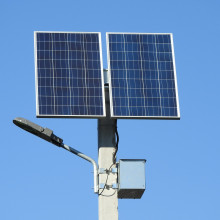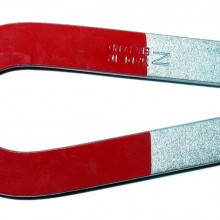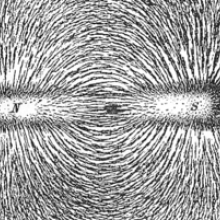The world crosses the threshold of 1 terawatt of energy produced from solar means, the parting gift left behind by birds meeting an unfortunate demise, and looking for exoplanets that have magnetic fields
In this episode

01:00 - Solar power output reaches 1 terawatt
Solar power output reaches 1 terawatt
Nancy Haegel, National Renewable Energy Laboratory
We’ve reached a landmark in renewable energy this week. The amount of energy generated by solar power has eclipsed 1 terawatt - that’s one trillion watts of energy. Solar PV, or photovoltaics, is the technology used in solar panels. These are a fairly common sight nowadays on roofs or in fields, but the first photovoltaic systems were used in specialised electricity grids in the 1990’s. In the past 30 years, their prevalence has skyrocketed thanks to improvements in the equipment itself and in the efficiency of their manufacture. The global output of solar power was predicted to reach 880 gigawatts watts by 2024, but we’ve smashed that target, reaching 1 terawatt already. But how does that stack up against our current power usage demands, and what does the future hold for solar power? Chris Smith spoke to the National Renewable Energy Laboratory’s Nancy Haegel...

14:05 - A new theory behind magnetoreception
A new theory behind magnetoreception
Adam Bradlaugh, University of Manchester
One of the great unsolved mysteries in the animal and plant kingdoms is how some organisms are sensitive to magnetic fields. A surprising number of animals seem to show some kind of sensitivity to magnetic alignment, albeit probably not consciously. The majority of dogs will poo on a North-South axis; Naked mole rats live their entire lives in underground tunnels, but rarely get lost; and sea turtles migrate for thousands of miles every year and find the same beach they hatched from without fail. But whilst the examples are remarkable, the mechanisms behind magnetoreception are still elusive. But now a new theory has emerged, and it might imply sensitivity to magnetic fields is more common than we realise. Will Tingle has been finding out more…

19:38 - Making a greener concrete
Making a greener concrete
Admir Masic, MIT
Concrete: as integral to the modern world as electricity or the internet. But did you know that making it causes 8% of global co2 emissions? Once concrete sets and cures after 28 days, it does capture co2 from the air for up to 100 years, but, as well as taking ages, this process has the additional downside of degrading the strength of the material. Admir Masic and his team at MIT have come up with a way to make more CO2 lock itself into the concrete earlier in its lifetime, reducing emissions and avoiding the degradation from carbon capture. It has to do with the cement hydration process, as Chris Smith heard…
Admir - You can create the atmosphere of CO2 around your hydrating cement block, you can pump CO2 into your track that is mixing your fresh concrete, or do it as we did it in this paper where we added sodium bicarbonate that allows you, once you add water into this additive and the water into the mix, saturates the solution, hydrating solution with the carbonates and eventually react with our hydrating cement.
Chris - The problem is obviously if you're using sodium bicarbonate, you've gotta make that in the first place, haven't you?
Admir - Any sort of carbonates that are soluble in the hydrating solution eventually will work. And we are trying different types of these. So there is a lot of work to do in that space. Nevertheless, what we show in our work here is that we can push significant amounts of CO2 into the structure of cement, which was kind of unknown. So we were talking about 15% of the entire emissions associated with the cement production. That can be remineralized in the very early stages, making cement and concrete a carbon sink.
Chris - That flips the equation round completely, doesn't it? Because if making it has a carbon footprint of about 8% of all emissions and you are saying you make it and we can actually remove 15% of the emissions, that sounds extremely attractive. Is the concrete you make any good? Have you structurally tested this stuff to make sure that what we end up with is something which is gonna hold up a building?
Admir - We did test the mechanical performance after carbonation, using carbonates in different concentrations, and we set this 15% limit exactly based on our mechanical testing results. We statistically show that we do not compromise mechanical performance after adding up to 15% of bicarbonates.

22:34 - Looking for magnetic fields on exoplanets
Looking for magnetic fields on exoplanets
Jackie Villadsen, Bucknell University & Sebastian Pineda, University of Colorado Boulder
Up into space now, and looking for Earth MK. 2. The pace of discovery of rocky planets out in space like this one, or exoplanets as they’re known, has really accelerated over the past 10 to 15 years. Looking for signs of life, or that another planet might be habitable, astronomers have a list of criteria when deciding which planets to investigate further - whether another planet might have water for example. If it was so essential for life here on earth, it might hold the key to finding it elsewhere. One such indicator is whether another planet could have a magnetic field and, recently, scientists in the United States think they may have happened upon a potential candidate….










Comments
Add a comment